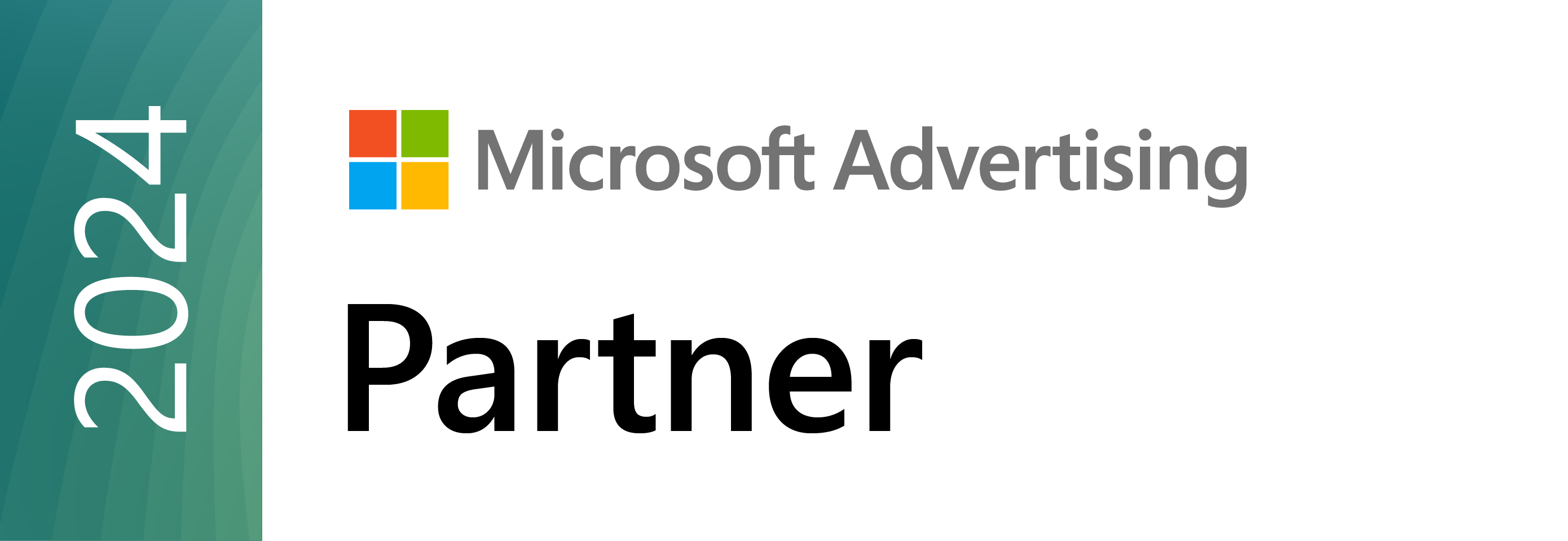
Tucker D. Pettigrew
College of Business, Clemson University
Abstract
The goal of this paper is to assist an organization with data collection and to analyze that data, which should assist with necessary business decisions. The hope is that both the student and the organization will benefit from the experience and learn from it as they proceed into the future. This specific paper focuses on RingoFire, a small to medium sized marketing company focused on promotional advertising for the hardware industry. RingoFire, founded by Brian J. Sterns in 2016, has quickly expanded in its four-year lifespan, and now wants to use data to increase its efficiency, identify problem areas and reduce waste, and prioritize acceleration over creation. This desire has been magnified due to the COVID-19 pandemic, which has benefited the company monetarily with an evolving marketplace that emphasizes virtual advertising and marketing. To date, accounting and operations has been the smallest business unit, with it largely being outsourced for most of the company’s history. The priority of this study is to describe the situation and identify the problem and propose a solution with alternatives by focusing on timesheets and expense sheets, both with an eye on increasing efficiency. The paper discusses the creation of the beta versions, the analysis that followed, and the final recommendations given to RingoFire for long-term success.
Keywords: RingoFire, marketing, advertising, COVID-19, data creation, labor, lead times, operational efficiency, predictive analytics
RingoFire Case Study
According to the United States Small Business Administration, about half of all businesses survive the first five years (SBA Office of Advocacy, 2018). That number drops to about one-third of businesses through ten years. The percentage has no doubt decreased substantially with the Coronavirus Disease-2019 (COVID-19) pandemic, which has altered the very nature of life for the foreseeable future—discussed in the Coronavirus Disease-2019 Pandemic section below. This has created a reckoning for many businesses on how each one operates and has accelerated the need for information. RingoFire is no exception. The marketing, advertising, and product innovation agency is in its fifth year of operation and is looking to join the minority of businesses that last a decade or longer. With the pandemic, the need for data is crucial, for as Brian J. Stearns, RingoFire’s Chief Executive Officer (CEO) and founder, says,
“Data is king now, no longer content.”
While Stearns first created the company “to break away from corporate America and follow a passion of [his],” the fledgling business initially focused on allocating money to billable hours to increase capital. RingoFire now needs business operations to accelerate it into the next chapter. Drew Faith, a business operations analyst for the company, realizes the need for as much data as can possibly be gathered, noting that since the company has grown enough, its accounting and business operation activities have been moved in-house, and that data should be the basis for all decisions. Ultimately, the company’s goal is to own predictive analytics. This study takes the first steps in a long journey.
With little foundation, data creation took precedence in this study, with timesheets and expense sheets beginning a years-long process. While this study could only last for a little over three months, it is the author’s hope that the templates and charts provided can be not only utilized in the future, but also will illuminate the potential for what data can do.
Company Background
RingoFire was founded in 2016 by Brian J. Stearns. The marketing, advertising, and product innovation agency specializes in strategic and creative marketing solutions. According to a press release, where AdWeek ranked the company sixth in its annual AdWeek 100: Fastest Growing feature (Exhibit 1), its background includes the following:
RingoFire is located in a 100+ year old weaving mill in Greenville that the company has revitalized and brought back to life. The founder and CEO, Brian Stearns attended Clemson University and moved to Greenville in 2016 to establish the agency and committed himself to invigorating a portion of Greenville that was once known nationwide for innovation back in 1920 (Carrizales, 2020).
RingoFire’s objective statement on its website states the company strives to “meet you where you are, study your business, and help provide resolutions to the challenges you face,” and its mission is “to ignite the success of your business.” Clients include national businesses such as Serta, Greenworks, AO Smith and more.
Organizational Structure
In five short years, the company has grown to 35 employees, including 31.5 full-time employees. There are four partner-level employees: Brian Sterns, the founder and Chief Executive Officer; Todd Johnston, Chief Creative Officer; Richard Carrizales II, Vice President of Business Operations; and Marco Carrizales, Vice President of Business Development. Additionally, Matt Tyo serves as Chief Financial Officer.
The accounting and operations unit is the smallest business unit at RingoFire, hence the need for enhanced data collection. Drew Faith serves as a business operations analyst and handles all data collection and analysis.
Coronavirus Disease-2019 Pandemic
The COVID-19 pandemic has changed the nature of society and the world for the
foreseeable future. The WHO (World Health Organization), defines COVID-19 as the following:
COVID-19 is an infectious disease caused by a newly discovered coronavirus. Most people infected with the COVID-19 virus will experience mild to moderate respiratory illness and recover without requiring special treatment. Older people, and those with underlying medical problems like cardiovascular disease, diabetes, chronic respiratory disease, and cancer are more likely to develop serious illness (WHO, 2020).
First reported to the WHO on December 31, 2019 (WHO, 2020), COVID-19 has quickly become one of the worst health crises the world has seen in the modern era. In fact, in the United States, it has drawn comparisons to the 1918 H1N1 flu pandemic, which killed an estimated 50 million people worldwide, according to the Centers for Disease Control and Prevention (Jordan, 2019). As of December 4, 2020, the severe acute respiratory syndrome coronavirus 2 (SARS-CoV-2, the virus that causes COVID-19) has infected over 64 million people and killed over 1.5 million people (WHO, 2020). This includes over 13 million infections and over 270,000 deaths in the United States.
This pandemic has understandably caused severe restrictions to the economic environments. States and various localities have implemented restrictions ranging from social distancing to stay-at-home orders. Many of these laws have forced business to either close, lay off, or furlough employees. According to the Bureau of Labor Statistics (BLS, 2020), the unemployment rate reached 14.7 percent in April 2020 in the United States. This was the worst unemployment rate since 1939, at the decline of the Great Depression, when it was estimated to stand at 17.2 percent. While the current unemployment rate has declined significantly since, it still stands at 6.7 percent (as of November 2020), which, excluding months since April 2020, was the worst rate since March 2014.
For businesses such as RingoFire, this has caused a two-fold problem. First, business-to-business companies (those that sell to business not consumers) must deal with their clients entering financial hardship and possibly shutting down. Second, this has caused business-to-business companies to face their own financial struggles with potentially the same problems their clients have. Yet, these problems are secondary to the lethality of COVID-19 and individual employees may have had to juggle the personal struggles of family members (or potentially their own) battling with the disease (or the social ramifications with which it is associated) and the financial ramifications of both the company and their individual family.
Contrary to the general landscape of the economy, RingoFire has benefitted monetarily from the pandemic. While most companies have seen financial problems, and potential ruin, the pandemic has resulted in RingoFire’s unique position in the marketplace becoming more essential for evolving business practices. Companies have been forced to expand their virtual presence and reimagine their marketing strategies with which RingoFire has assisted organizations for years. Additionally, several of RingoFire’s clients participate in the home improvement/do-it-yourself industry, which has seen an explosion in demand since the pandemic began (Olick, 2020). This, in turn, has increased those clients’ budgets for marketing, where RingoFire benefits.
However, the pandemic has brought RingoFire its own problems. South Carolina Governor Henry McMaster issued a stay-at-home order beginning April 7, 2020 (State of SC, 2020). Given that RingoFire was not designated as an essential business, this order compelled RingoFire employees to work from home. While this was not as problematic for RingoFire as it was for other business, given that most of RingoFire’s work is completed virtually, it still caused ramifications for both the company and the employees. The photography business unit certainly had to adjust with the stay-at-home order. Additionally, the employees are likely suffering the personal dilemmas that others are as mentioned above. Mental health issues have seen a sharp rise during the pandemic with 18 percent of employees reporting struggling with their mental state, compared to only five percent prior to the health crisis (Horch, 2020). This is a challenge many companies, RingoFire included, will have to face long after the pandemic ends. While the topic was not explored in the company in this study, it is certainly an area of concern and one that needs attention.
Qualitative Meets Quantitative
The words “qualitative” and “quantitative” are similar in spelling, but the divide between numeric and non-numeric descriptions can seem cataclysmic at times. Many people specialize in one and cannot function in the other (e.g., “not a math person” or “no social skills”). For those who have skills in both, it is vital they use those skills to bridge the gap. RingoFire is no exception to this. The company was founded by creative individuals who wanted “to break away from corporate America.” The theory was that any significant quantitative analysis was deemed “too corporate” and not what RingoFire does. Any accounting that needed to be done was outsourced. According to Stearns, the company initially allocated its resources to billable services, “because needed dollars to start the company,” according to Stearns. “We took a bootstrap approach, no loans, no credit… just land business and build the business.”
While this strategy worked initially, as the company expanded, it became necessary to insource accounting and operations. Drew Faith came on board early in 2020 and he, along with the other members of the business unit, have fought an uphill battle to alter the culture of the business into one that views numbers and data as a vehicle for creativity, not as a crutch to it. Faith views it as a slow process that necessitates incremental change to not “rock the boat” significantly. For example, most of the employees do not have Microsoft Excel installed on their computers and only use Google Sheets for basic data entry.
To bridge this divide, it is necessary to find a way to present data in a way that is not overly raw or technical. Data visualization accomplishes this well. According to George A. Miller (1956), most humans have the capacity to remember five to nine objects in short-term memory. This means that if a large dataset is provided, it is likely to be cast aside shortly after presentation due to the difficulty of memory and interpretation. However, if the data is condensed into a chart, observers can absorb significantly more chunks of numbers. This is most often done in the form of bar charts and line graphs.
The pandemic has enhanced the need for data and proper visualizations of it. While the two are not intertwined (the pandemic and data analysis), the new challenges and opportunities the pandemic provides necessitate a numerical understanding of how to position RingoFire for future success in the marketplace.
As the data collection process proceeds, there are several avenues worth exploring. Potential categories to investigate include labor tracking, lead times for projects, job costing, quality of work, inventory levels, and operational efficiency. Labor tracking and operational efficiency can be achieved simultaneously. As employees are tracked for their time on projects, the data may also be used to judge whether the time spent is efficient or whether there needs to be changes in some form. Lead time for projects can also be measured with these two metrics, with proper data manipulation. Job costing is the basis for all expenses and determines the bottom line. This can also be tracked with a mind on operational efficiency, separating costs by job to determine if money is being wasted. Quality of work is more difficult to judge but can potentially be accomplished through tracking number of revisions on each project. Finally, inventory levels can be tracked through an initial count of items (and a regular recount), as well as logging all items purchased and sold.
The “Why”
“User data (shopper data) can help drive incremental sales for our clients. The more data you harness and leverage, the more sales you will drive.” Those words from Stearns elucidate the need for data at RingoFire. Given the macroeconomy, increasing revenue as much as a business can is essential, as costs have likely become exorbitant with various COVID-19-related impacts. As such, data is needed as soon as possible to make informed decisions. As Faith noted, “Data should be the basis for all decisions.” Additionally, Stearns opined the following:
Data is king now, no longer content. Content is always going to be important but the new king in retail is data … strategic, consumer behavior and demographical data is the key to targeting and driving sales. It’s also important when introducing a new brand or building an entirely new program at the retail or e-commerce level. Data is gold, and whoever has the most gold will end up on top and survive whatever other bumps nature or the economy throws our way.
As discussed, accounting operations were outsourced initially. The company has grown since and now has brought the data gathering inside. As Stearns put it:
Initially, it made more sense to outsource for things like website development and videography because I had no prior experience there. As we grew, we quickly brought these items in-house. Keeping everything in-house allows me to control costs and get projects done faster.
Finally, Stearns and RingoFire have a goal to use this new data strategy to not only see what has happened, but also predict what will happen. Stearns said, “My goal is to own predictive analytics: [knowing] what the customer wants before he or she even knows they want it. Then have it delivered right to their door through a campaign that drives a rapid sale.”
Narrowing It Down
When an outsider comes into a culture and tries to radically change processes, it can have disastrous results. According to Suwankhong and Liamputtong (2015), “Cultural outsiders hold different values, beliefs, and knowledge from the community where they undertake their research. They have less understanding than insiders of the values, beliefs, and behaviors of the community.” This necessitates the need for either a substantial amount of time contributed to observation, which is impossible for this study given the length and COVID-19 changes, or a cautionary approach that relies on the cultural insiders to guide the change.
Consequently, only so much can be achieved in this short period of approximately three months. Faith and the author determined that the best course of action was to focus on items that were both actionable and had a short turnaround. These items were timesheets, to prioritize labor tracking and operational efficiency, and expense sheets, to prioritize job costing.
Creation
Designing forms for those who specialize in design is not a simple task. Significant care must be taken into the minutia to not discourage the purpose (filling out the form). If a page looks “too corporate”, it could backfire with little steadfastness in completion. Thus, both timesheets and the expense sheets were meticulously crafted to encourage fulfillment.
The timesheet (Exhibit 2) consisted of times clocked in and out, as well as total hour calculations, employee name, and signatures. After the first draft, descriptions were added to incorporate the operational efficiency component. Additionally, dates were added for organizational purposes. The key discussion points about the sheet effectiveness centered on “big brother”. As George Orwell’s 1949 novel, 1984, illustrated, the idea of an authority always watching is extremely disconcerting to individuals. There was concern that RingoFire’s employees might view the timesheets in a similar manner. To combat this, the author and Faith decided to limit the timesheet’s clock-in and clock-out times to half-hour increments. This way, there is some independence still involved, while also collecting necessary datapoints.
The expense sheets (Exhibit 3) were less intuitive to create. It is difficult to anticipate every possible cost category that can go into a job. Even something as simple as billing for lunch during work is crucial to include as it can add up over time. The best course of action to combat this was to create a sample budget and expense sheet rather than a template, so that it could be edited as needed. The sample budget consisted of labor, hard costs, and advertisements, with subcategories. Like the budget, the sample expense sheet consisted of equipment, production, swag, digital advertising, software, shipping and handling, and labor, with subcategories. The two sheets’ totals were subtracted on a sample budget variance sheet to achieve a bottom-line number. All items across the three sheets were color-coded as needed for design purposes and clarity.
Beta over Sample
When conducting an experiment, scientists experiment before they draw conclusions. So too does the researcher. In most instances, when trying to observe how a population will react to a specific measure, the researcher will take a sample of the population. Typically, this is done via random sampling. Types of random sampling methods include simple random sampling, cluster sampling, stratified sampling, and systematic sampling, among others. However, there is also nonrandom sampling. Some examples of that would include convenience sampling, voluntary response sampling, and snowball sampling. These nonrandom methods are not purposefully representative of the population. In the RingoFire case, Faith wanted a nonrandom sample known as a beta version. For example, Apple releases beta versions of its software to developers and certain premium users to work out the kinks before it is released to the general population. When releasing the timesheets, RingoFire followed a similar method. Of the 35 employees, 10 were selected to participate in the beta version. These employees were limited to upper-management and senior-level employees in the graphic design and the photo & video business units.
Data Analysis
The timesheets were distributed to the chosen individuals and they completed the forms from October 19, 2020 to October 23, 2020. Most of the data is complete with some notable exceptions. Carlee Ashy was sick and therefore did not log any hours from October 20 to October 22. Additionally, DK did not log hours on October 21 or October 22 and Jake Riggins did not log hours on October 23. Neither employee provided a reason for the lack of hours.
In total, the 10 employees logged 282.5 hours over that week, for an average of 28 hours
15 minutes per employee. The hours were dedicated to 27 different clients as well as hours dedicated to internal work. Six of the employees were designated as in the photo & video business unit and four were designated as in the graphic design business unit.
After the raw data was analyzed in Tableau (Exhibit 4), the following insights were gathered:
- Three of the four graphic design employees logged more hours than any photo & video employee.
- The vast plurality of time was spent internally (although it only accounts for 27.8 percent of time spent).
- Three of the graphic design employees logged more internal hours than any photo & video employee. However, the total distribution of hours between the two units was less stratified, with 56.1 percent spent by graphic design.
- Of the clients, RingoFire employees spent the most time on Greenworks with 29.5 hours logged among nine of the ten employees. The only employee that did not log time with Greenworks was DK. Greenworks accounted for 10.4 percent of the total hours worked.
- Stephanie Burroughs spent more time with the client Flybar than any employee spent with any other client.
- Of the 27 clients, eight of them were assisted by only one employee that week, with the most hours spent by Matt Heerschap on AO Smith, accounting for 3.5 hours.
- Twelve of the 27 clients only had photo & video work completed. Three of the 27 only had graphic design work completed. Therefore, 15 of the 27 clients, or 55.6 percent, only had either graphic design or photo & video work completed. Of those, Vector had the most hours spent on it, with 15.5 hours dedicated to photo & video.
This list is not comprehensive. There are dozens of insights that can be gathered, even from this limited dataset. Further insights can be multiplied when paired with other data, such as financial data. These insights are not meant to present an opinion nor do they constitute a recommendation of any kind. Any conclusions drawn are those of the reader.
Recommendations
Numbers never lie. However, if the user of the numbers does not factor in all potential information, numbers can tell a deceptive story. There are an infinite number of potential lurking variables that can influence numbers and ignoring them, intentionally or unintentionally, could prove costly. The truth is that numbers and data can only reveal so much about an organization. They can illuminate financials, they can gauge efficiency, and they can predict what might happen in the future. However, they cannot account for the intangibles of a business: cooperation, communication, and dedication, among other factors.
With that said, data collection should not be discouraged, but rather encouraged. More data and more information can only prove beneficial to an organization. If the data is interpreted and applied responsibly, it can vault a business into new heights. Both Brian Stearns and Drew Faith seem to have a good handle on what data can provide them and hopefully are responsible enough to apply accurate interpretations.
The crux of data collection is persistence. A week’s collection, as was done in the timesheet beta version, is not nearly enough for proper analysis. The margin of error is significantly large. For proper interpretation, data should be collected on an indefinite term. Ideally, any decisions should not be made until at least a quarter’s worth of data is gathered, if not a full year’s worth of data.
Both the timesheet and the sample budget sheets serve as good templates for future data analysis. If the sheets are used enough, the data can be extrapolated and interpreted in Google Sheets, Microsoft Excel, Tableau, or any other analysis program. The key is to only make interpretations that are representative of the sample RingoFire would analyze, whether it is the whole company or a particular subset.
Additionally, with the new data analysis capability, RingoFire may be able to market data analysis to its clients. There is no better way for a company to advertise than to promote its own statistics. If RingoFire can combine graphic design and photography with numbers that legitimizes a company, RingoFire should see an increase in its favorability among clients.
With the COVID-19 pandemic changing the landscape of all business practices, data is more important than it ever has been. Knowledge is power. For RingoFire to avoid becoming one of the two-thirds of businesses to fail within the first ten years (SBA Office of Advocacy, 2018), it must have as much knowledge as possible to compete against potential opponents. While this study was not intended to represent an instruction manual, it has provided RingoFire with valuable information to proceed into the uncertain future. Whatever the future holds for RingoFire, the company should be in a good position to use data effectively and hopefully that data will bring them success.




